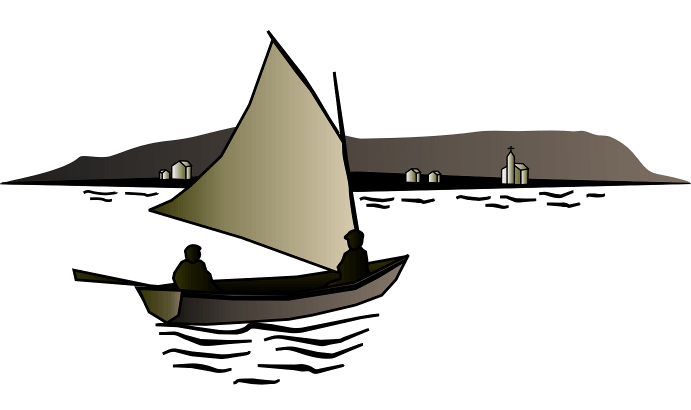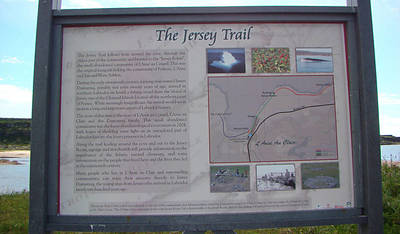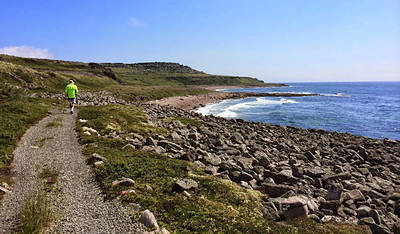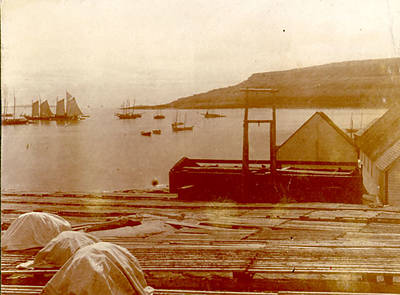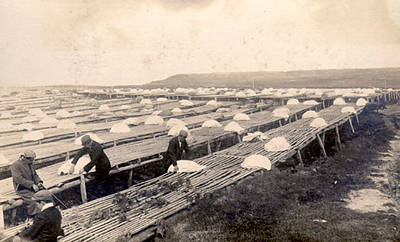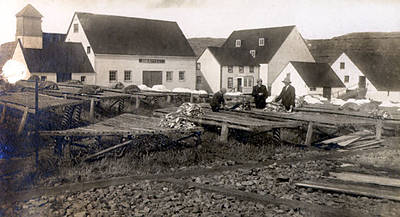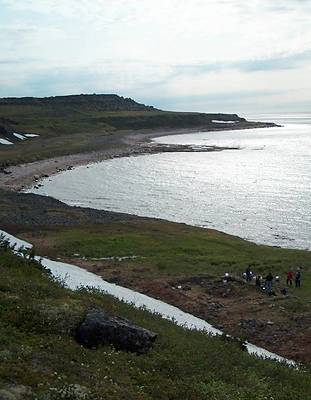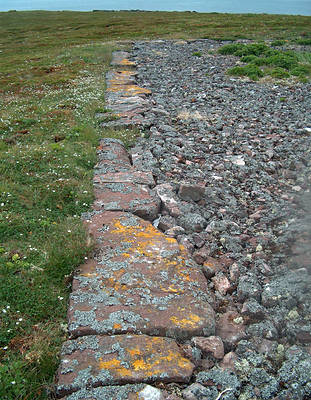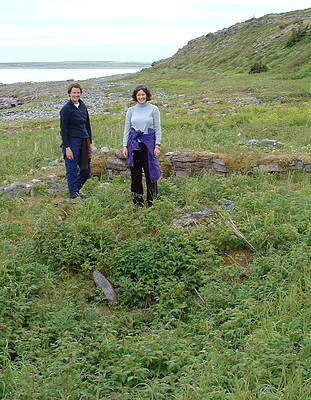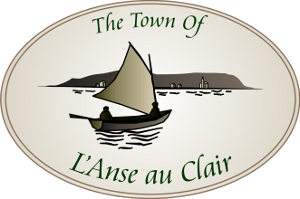The Jersey Trail
The Jersey Trail is a developed 1.5km walking trail that runs from the town of L'Anse au Clair to a nearby secluded cove called L'Anse au Cotard.
The trail is now accessible from the Quebec-Labrador border parking lot. You can also access the trail by driving to the end of Oceanview Drive in L'Anse au Clair past the harbour wharf and following the dirt road leading to another parking lot.
Interpretive panels along the route tell the story of Jersey merchant enterprises on the Labrador coast during the 18th and 19th centuries, and the Jersey fishermen & settlers who made this place home.
Jersey and the Channel Islands
Jersey is one of a group of islands in the English Channel near the coast of France, commonly called the "Channel Islands". First occupied many thousands of years ago by Stone Age people, these islands have a long and complex history.
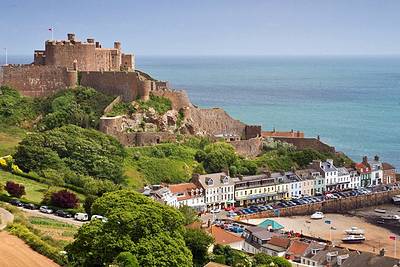
In the 9th century the islands were invaded and settled by Normans (who we call Norse
or Vikings today) and became part of the ancient Duchy of Normandy. Many of the placenames on the islands are of Norse origin, including the name "Jersey".
Subsequently the islands were controlled by France and then England. Today the Channel Islands are crown dependencies of the United Kingdom — they have their own governments, yet ultimate power resides with the government of the United Kingdom.
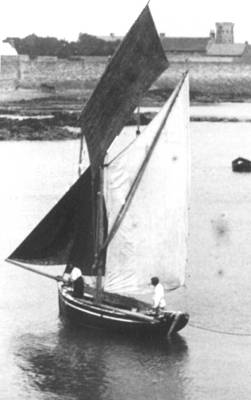
Jersey merchants and fishermen in Labrador
Beginning in the 1770s, Jersey merchants established operations on the Labrador coast. One of the first was DeQuetteville & Co, a Jersey company that left their station at Harbour Grace, Newfoundland and moved to Blanc Sablon. In the decades that followed, several other Jersey firms followed. These merchants were engaged in the lucrative cod fishery and, secondarily, the seasonal seal fishery.
Along with the merchants came fishermen and their families to settle the harbours of Blanc Sablon, L'Anse au Clair, Forteau and L'Anse au Loup. The Dumaresq family were the earliest permanent settlers at L'Anse au Clair. James Dumaresq was the first to arrive, probably in the 1810s. James chose L'Anse au Cotard, a small cove a short walk from L'Anse au Clair, as the site for his homestead.
In the 1870s, financial turmoil in Jersey led to the collapse of many Jersey merchants, and their operations in Labrador were abandoned. The establishments belonging to DeQuetteville were taken over by a Newfoundland company, Job Brothers.
The fishermen and families who had settled during the days of the Jersey merchant operations stayed. There are Dumaresq's in L'Anse au Clair today, along with other families of Jersey descent.
Archaeology at L'Anse au Cotard
In 2004-2005 archaeological research was undertaken at the Jersey site at L'Anse au Cotard. Visible at L'Anse au Cotard are the remains of stone building foundations and flagstone pathways.
Archaeological excavations focused on a partially exposed, mortared stone foundation that measure about 7.5 x 11 metres, with a small outbuilding extending off the western side.
The structure is believed to have been a dwelling house built during the 1830s, possible by James Dumaresq for one of his sons. The structure was apparently destroyed by fire in the 1880s.
A large quantity of artifacts recovered from the site includes ceramics, fragments of clay smoking pipes, cutlery, glass beads, copper thimbles, bone buttons and gun flints. There were woodworking tools, perhaps used for barrel-making, commercial copper tokens, a small bone cross, and what appears to be a bone sled runner.
Many of the smoking pipe fragments have markings from which their place of origin can be determined. Some originated in England, other in Canada and Scotland. Some pipe fragments carried the maker's name "J. Collings" and the word "Jersey" stamped into the clay.
